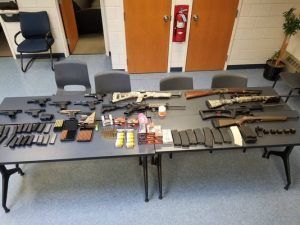New York, Second Amendment attorney and NRA Firearms instructor Peter Tilem scored a major victory in Rockland County Court earlier today, when the Judge holding a suppression hearing ruled that there was no probable cause for the arrest of his client and ordered 13 guns, hundreds of rounds of ammunition, and high capacity magazines, called “high capacity ammunition feeding devices” suppressed, meaning that they could not be used as evidence at trial because of the fact that they were illegally seized. The decision came after an intense suppression hearing in Rockland County Court where two senior police officers testified about the circumstances surrounding the arrest and interrogation of both individuals charged in a 12 count indictment.
Following reports of shots fired on July 8, 2018, in the area of the New York – New Jersey border in Rockland County, police from both New Jersey and New York police departments located three individuals firing weapons which were lawfully purchased and possessed in New Jersey. The handguns were unlicensed in New York and the individuals were found less than a 1/4 mile over the border in New York. In addition, some of the weapons which were lawful in New Jersey violated New York’s “Safe Act” and magazines that were legal in New Jersey violated New York’s ban on magazines capable of accepting more than 10 rounds of ammunition.
 New York Criminal Attorney Blog
New York Criminal Attorney Blog

















